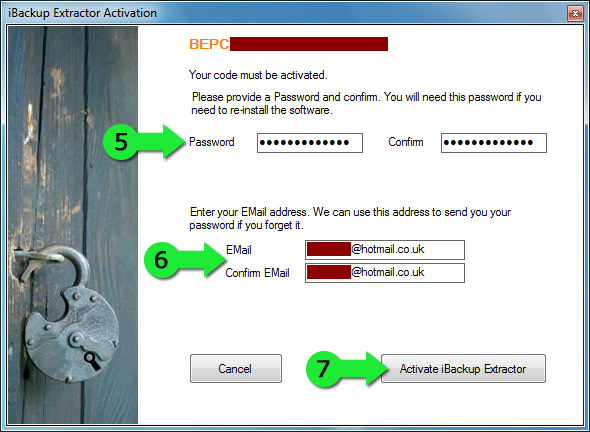

- #IBACKUP EXTRACTOR CRASHING FOR MAC#
- #IBACKUP EXTRACTOR CRASHING UPDATE#
- #IBACKUP EXTRACTOR CRASHING ARCHIVE#
2 or more different media should be used to eliminate data loss due to similar reasons (for example, optical discs may tolerate being underwater while LTO tapes may not, and SSDs cannot fail due to head crashes or damaged spindle motors since they don't have any moving parts, unlike hard drives). It states that there should be at least 3 copies of the data, stored on 2 different types of storage media, and one copy should be kept offsite, in a remote location (this can include cloud storage). The 3-2-1 rule can aid in the backup process. The scheme determines how and when each piece of removable storage is used for a backup operation and how long it is retained once it has backup data stored on it. The backup data needs to be stored, requiring a backup rotation scheme, which is a system of backing up data to computer media that limits the number of backups of different dates retained separately, by appropriate re-use of the data storage media by overwriting of backups no longer needed. The repository could be as simple as a list of all backup media (DVDs, etc.) and the dates produced, or could include a computerized index, catalog, or relational database. There are limitations and human factors involved in any backup scheme.Ī backup strategy requires an information repository, "a secondary storage space for data" that aggregates backups of data "sources". Backup schemes may include dry runs that validate the reliability of the data being backed up. Additional techniques apply to enterprise client-server backup. The process can include methods for dealing with live data, including open files, as well as compression, encryption, and de-duplication. There are also different ways these devices can be arranged to provide geographic dispersion, data security, and portability.ĭata is selected, extracted, and manipulated for storage.
#IBACKUP EXTRACTOR CRASHING ARCHIVE#
There are different types of data storage devices used for copying backups of data that is already in secondary storage onto archive files. An information repository model may be used to provide structure to this storage. The data storage requirements can be large. Ī backup system contains at least one copy of all data considered worth saving. Backups provide a simple form of disaster recovery however not all backup systems are able to reconstitute a computer system or other complex configuration such as a computer cluster, active directory server, or database server.

Backups can be used to recover data after its loss from data deletion or corruption, or to recover data from an earlier time. The verb form, referring to the process of doing so, is " back up", whereas the noun and adjective form is " backup". In information technology, a backup, or data backup is a copy of computer data taken and stored elsewhere so that it may be used to restore the original after a data loss event. For other uses, see Backup (disambiguation).
#IBACKUP EXTRACTOR CRASHING FOR MAC#
It allows you to retrieve anything you might have had stored on an iOS device at any time, and it is free to try (with a $24.95 upgrade price for the full version).Įditors' note: This is a review of the trial version of iBackup Extractor for Mac 2.07.This article is about duplicate data in computer systems for data recovery. If you have a lot of backup files or even just one that you can't access anymore because you have moved on with a new iOS device or deleted that data, iBackup Extractor is a useful tool. Most of the time it worked flawlessly, though. Unfortunately, we ran into a few performance issues, including some hanging and at least two crashes that occurred while loading large data sets like the Calendar from particularly big backup files. Considering Mac and iOS offer no way to do this natively, it's a very useful tool, and the interface here is very straightforward. Whatever is backed up to your computer is in that file. So it will show all of your messages, notes, calendar entries, images, etc. You can then click on any of the data types on the left of the screen to pull up a list of all data in that backup file. It automatically detects them and populates a list on the top of the screen. When you open the app, you can load any of the backup files on your computer.
#IBACKUP EXTRACTOR CRASHING UPDATE#
This data, stored in backup files you make whenever you update or back up your iPhone or iPad, contains things like messages, notes, calendars, and contacts, and can be stored indefinitely on any device, including backup hard drives so a tool like this is great for accessing information that will never make it back onto a phone. IBackup Extractor for Mac allows you to pull and view data from any of your devices on your Mac.


 0 kommentar(er)
0 kommentar(er)
